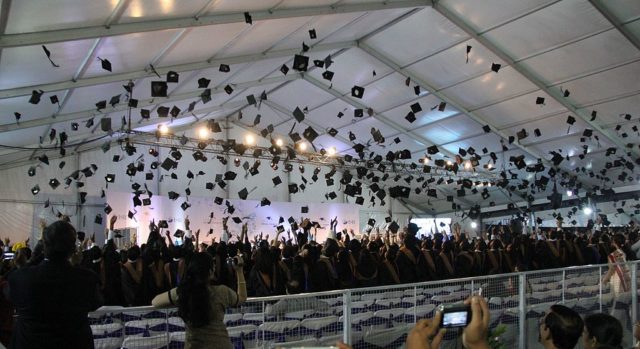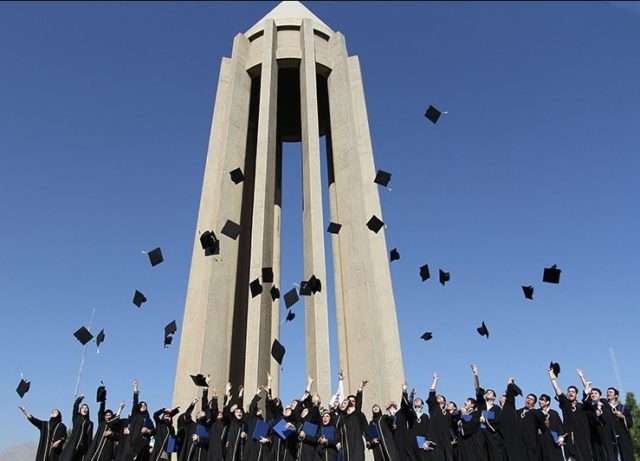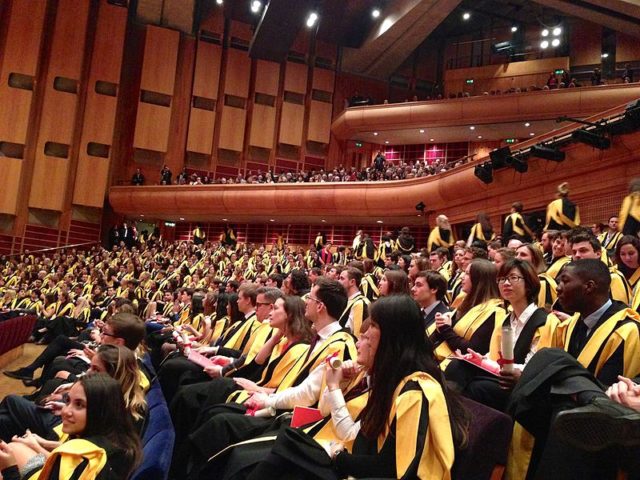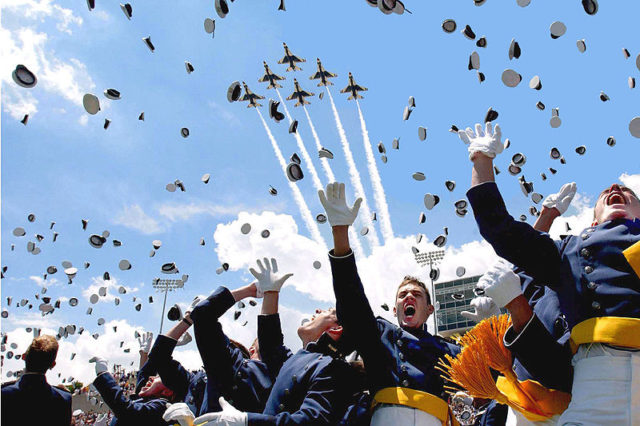Graduation from an educational institution is always important to a student and often involves a ceremony. Whether it is a kindergarten graduation or the commencement for a Ph.D, all countries have their way of celebrating a student’s achievement. Graduation ceremonies differ depending on where the ceremony takes place.
In South Africa’s University of the Witwatersrand, commencement celebrations are very formal – the procession is made up of the entire faculty. The choir is usually present for a song or two and once the ceremony is complete, James Brown’s recording of I Feel Good is played.

In Sweden, high school graduations are celebrated as well as university graduations. Instead of a mortarboard hat, the students wear a round cap with a black bill called a studentmössa. The cap has evolved over the years, and for engineering graduates, the main color of the cap indicates which school of technology they attended.
Some have incorporated tassels into their hats as well. When the students leave the building after the ceremony, families wait for them with large homemade signs; usually, to embarrass the graduate, the signs include pictures of the student as a child. Once the ceremony is complete, students and their families gather together for a song and to join in a parade, complete with floats, around the town.
In the Philippines, students have graduation ceremonies for each level of education completed. The processional includes the parents, who walk alongside the student. When each student approaches the stage, he is required to turn and bow to the audience. Having received their diploma, they are honored with a garland placed around their necks.
The garland is made from ribbons decorated with flowers that have been made from ribbon or silk. Once the ceremony is complete, students receive additional garlands from their families. It is customary for the graduate to wear white with a purple sash that indicates what honors he has received. Hats are generally not worn, except by faculty. More recently, students have started wearing mortarboards and gowns with their school uniforms underneath.

In Spain, graduation attire is very traditional. The robes have a built-in cape similar to those worn by the Pope. They have lace cuffs and a round hat with a very large cuff – usually in blue.
Japanese students enter into a coordinated march and sing as they line up for diplomas. They wear their school uniforms – dark blazers and slacks with a white shirt and red tie for the men; dark blazers, a plaid skirt, white shirt and red tie, along with dark knee socks and black shoes for the women. The school year begins in March and the lower grades return to school immediately after the short ceremony.
At Japan’s Kanazawa College of Art, ceremonies look more like Halloween than a graduation. Students wear whatever they want, and their attire has become so outrageous that TV crews come in to film the ceremonies. Students wear everything from traditional Kimonos to cardboard boxes.
At Ritsumeikan Asia Pacific University, men usually wear dark business suits, or traditional haori hakama, while women wear traditional kimonos, or onna hakama. In secondary school ceremonies, the students are expected to bow to the Japanese flag and sing the national anthem and the school song. As the names are called out, each student goes to the podium and receives their certificate with their left hand followed by their right hand; then with a step backward, they bow to the principal. They carry the diploma in their left hand while making their way back to their seats. Before they take their seats, each student is expected to bow toward their family members.

In Argentina, after the ceremony is complete students have food, especially sticky things like ketchup and syrup, thrown at them. Italian graduates are also subject to food being thrown at them by friends and family, and they often wear costumes.
Continues below
Students in Germany usually don’t have any ceremonies when they graduate and are more focused on taking the final exam, called the Abitur, which grants them entrance to apprenticeships and universities.
In Thailand, diplomas are given out to students by members of the Royal family. No one is permitted entrance to the hall except the graduates, and they must be dressed in traditional gowns over their student uniforms. Women are allowed no hair decoration and must wear stockings with plain black shoes. Men are expected to have no facial hair, and their hairstyle is required to be short. Students must bow to the Royal handing out the diplomas.
Norwegian graduates spend the last month of school at parties. They sometimes wear matching overalls and ride around in buses or vans decorated for contests such as “the best bus of the year” and “the best music setup” of the year.
Female Chinese graduates have started a new trend of renting wedding gowns to wear to graduation. Traditional ceremonies usually don’t take place, and the students may set their own style of celebration without parents and relatives attending.

Russian women usually wear black dresses with white aprons while attending graduation ceremonies that are similar to those celebrated in the United States.
Ceremonies are only held for University-level students in the UK. The British wear gowns but not mortarboard hats. University of Bristol students don traditional gowns but no head coverings, while Oxford and Cambridge University graduates wear gowns with fur-lined hoods draped across the shoulders. Much of the ceremony is done in Latin. The robe is usually colored according to the type of degree awarded. Graduates in Wales hear the entire ceremony in Welsh.

The United States has many types of graduations, depending on the school attended. Formerly, only high school seniors and college graduates participated in these ceremonies, but a more recent trend adds ceremonies for kindergarten, elementary schools, and middle schools. Traditional caps and gowns in school colors are worn, and commencements are usually held in stadiums, large halls, or amphitheaters, depending on the size of the graduating class.
The graduates file into the hall to the sounds of Pomp and Circumstance and then take their seats. A commencement address is given, usually by the highest-achieving student or, as in the case of Universities, a prominent member of society such as a politician or celebrity. Graduates receiving their master’s degree or Ph.D wear sashes to indicate their academic level. Family and guests in the audience are asked not to applaud individuals but to wait until the ceremony is over and applaud the class as a group. This is usually enforced in colleges more than public school graduations.
Traditionally, graduates have a senior picture taken, often with sports trophies, music instruments, and even family pets. Those who have excelled in sports or other extracurricular activities often receive special recognition in banquets held before graduation day. As most of the graduating class sits lower than the audience at ceremonies, students have begun using light-colored tape to place thank you notes to their parents on the tops of their mortarboard caps.
Military schools such as the US Air Force Academy in Colorado hold their ceremonies in football stadiums and require dress uniforms. They started the tradition of graduates throwing their hats into the air as the ceremony concludes with a jet flyby.

The visual effect of so many hats in the air at once is an inspiring sight. Marine Corps boot camp graduation is usually held at Parris Island in North Carolina or San Diego, California. It coincides with Family Day, in which the graduating Marines may invite as many people as they wish to attend family activities sponsored by the Marine Corps.
Marksmanship displays, the Motivational Run, (which includes commanding officers running alongside the troops for their last boot camp run) and a “behind the scenes” tour are just a few of the displays put on by the graduating recruits. The base EGA store, a nonprofit entity run by MarineParent.com, offers Battalion T-shirts which come in the colors each battalion has chosen; these can be worn by friends and family for the graduation ceremony. Writer: Donna Patterson
